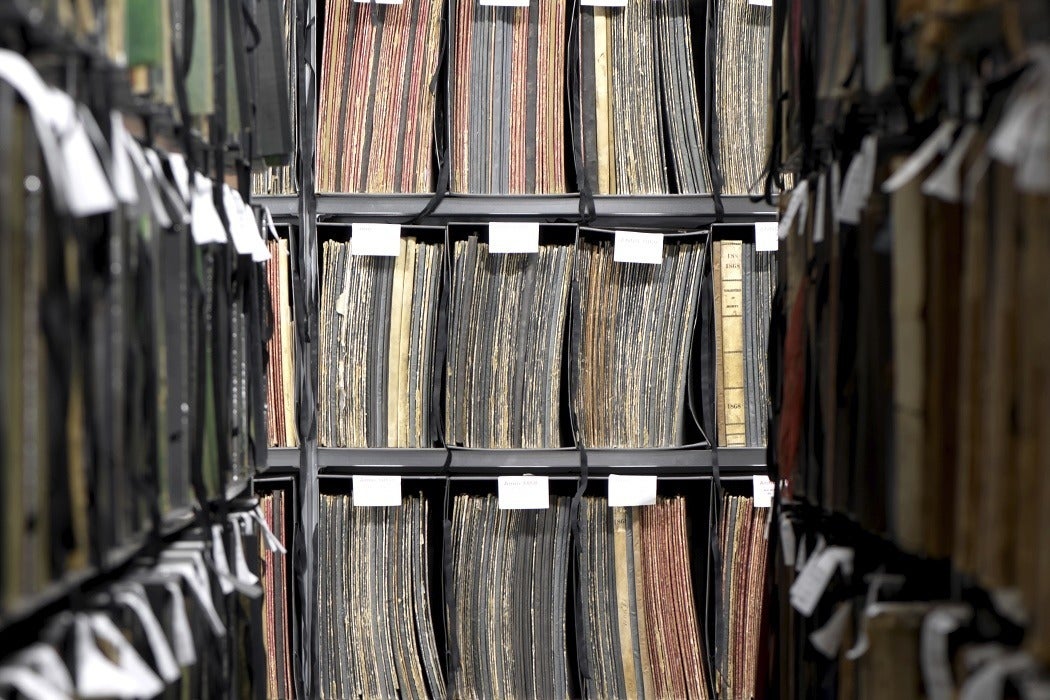A few weeks ago The Genealogy Factor examined the 1918 Influenza Epidemic, revealing a number of insights into the origins and spread of the disease, as well as the world’s reaction to the tragedy. In the process of learning more about the epidemic itself, I became intrigued with studies relating to the epidemic’s mortality rates. With no shortage of material to consume, the science behind determining population statistics quickly became an unexpected, and interesting, resource for genealogical inspiration. Studies of birth, marriage, and death rates are plentiful. Some discuss large regions and vast time periods, while others focus on a specific town or community during a single year or event. Genealogy and the study of populations have a great deal in common—opening intriguing pathways for anyone tracing their family tree.
As a starting point, a glimpse of when (and where) to look for the birth or death of an ancestor can be gleaned from studying local mortality rates. The Journal of Economic History examines mortality trends in Massachusetts before 1860, gathering studies from multiple towns to report life-expectancies for larger cities such as Boston, maritime cities like Salem, and rural communities. These studies can help narrow down a potential time period of records to examine. Not an exact science, but one tool that can aid your genealogical research.
Those studying birth, marriage, and death rates encounter very similar problems as genealogists—the records themselves. How does one go about studying the birth rate of an area when the birth records themselves are inaccurate? How do you even know if the records are accurate in the first place?
One step in answering these questions is to take a look at the methods employed by those studying historical populations. Daniel Blake Smith’s look into Charles Parish, Virginia reveals a potential “test” for estimating the accuracy and reporting of a given birth register. The test pulls upon a 1958 method from George W. Barclay’s Techniques of Population Analysis, which compares the ratio of male to female births in a given area to average birth runs. Put into practice, counting the number of male births for every 100 female births, the ratio for Charles Parish, Virginia between 1660 and 1760 was reported at 107.0, falling within the typical range of 102 and 108 and close to the reported average of 105. While not a sure proof method, it is at least one additional tool to use when evaluating a registry of births. As any genealogist knows, it is important to evaluate your sources—and you can read the contemporary reviews of Barclay’s methods in Land Economics and American Journal of Sociology.
Other important factors play a role in Smith’s study of Charles Parish, Virginia and open the doors for future collaborations. Migration, a focus for many genealogists, is key to remember. Someone who arrived in Charles Parish, Virginia as a child or adult might appear in the death register, but wouldn’t necessarily appear in the birth register. Similarly, someone who left the area as a young adult would appear in the birth register but not in a listing of deaths. This would seem to be the perfect opportunity for genealogists to engage in these studies—tracing the migrations of individuals to help hone in on the accuracy of a particular birth or death register.
Estimating the accuracy and depth of the records is just one insight genealogist’s gain from population studies. When researching, genealogists often want to ensure they have identified and documented each child of a family. Studying the average sizes of families can be another important clue. Smith’s look at the average sizes of families in Charles Parish, Virginia is eye opening. The majority of families whose fathers were born between 1690 and 1719 had fewer than three children. What about those large families we often see reported? On average less than 10% of families in this range consisted of more than seven children.
There seems to be an endless supply of clues and insights waiting on population studies for genealogists. They might assist in locating records, narrowing time periods, estimating a family’s size, and evaluating the vital records themselves. One final insight: ever wonder about the relationship between land and your ancestor’s birth rates? Morton Owen Schapiro studies links between land available and fertility in the United States between 1760 and 1870, comparing a wide variety of birth rates, concluding that a decline in the availability of land led to a decrease in fertility across the United States.







